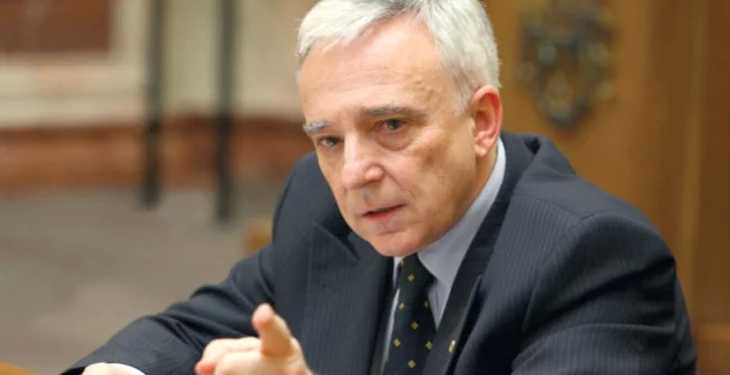Short-term inflation will increase, implicitly due to energy prices, according to the National Bank of Romania.
”The uncertainties and risks associated with this outlook stem from the domestic and external environment. Domestically, they are compounded by the fiscal and income policy stance, also in the context of the uncertainties surrounding the construction of the 2018 budget, as well as by the prospects for administered prices (of natural gas, electricity) and volatile food prices”, according to the bank.
BNR governor Mugur Isarescu says more details are to be offered at a conference this Thursday.
Bank also said that the annual inflation rate rose to 1.77 percent in September, from 1.15 percent in August, slightly above the forecasted level, and re-entered the variation band of the flat target, in line with expectations.
The increase owed primarily to the advance in volatile food prices and to higher fuel prices driven by the rise in international oil prices and in the excise duty on motor fuels, as well as to the faster core inflation.
The annual adjusted CORE2 inflation rate went up to 1.8 percent in September, from 1.6 percent in August, also higher than the forecast. The pick-up was due to both processed food prices and services prices, while non-food items had a marginal influence.
In September 2017, the average annual CPI inflation rate consolidated in positive territory at 0.4 percent, against 0.2 percent in August; calculated based on the Harmonised Index of Consumer Prices, the annual average increased to 0.5 percent versus 0.3 percent a month earlier.
Revised economic growth data for 2017 Q2 reconfirm the step-up in the annual dynamics of real GDP to 6.1 percent (compared with the previously-estimated 5.9 percent and with 5.7 percent in Q1). The pick-up in growth was almost entirely attributable to the change in inventories and to private consumption. The latter saw its prevailing contribution to GDP growth consolidate at 5.4 percentage points, as its annual dynamics increased to 7.5 percent under the impact of fiscal and wage measures. The contribution of net exports to the advance in GDP turned negative again, amid a deceleration in the annual growth rate of exports of goods and services and a slight acceleration in that of imports.
The trade balance worsening led to a protracted widening trend of the current account deficit, whose cumulated eight-month level stood above EUR 4 billion, exceeding as early as July the full-year figure for 2016. Statistical data for August indicate the consolidation of the uptrend in industrial output, a stepped-up activity in trade and services, as well as the return to positive territory of the annual dynamics of construction works.
In October, monetary conditions were less accommodative, given the significant upward adjustment in the relevant interbank money market rates, as well as the slight appreciation of the domestic currency versus the euro. The annual dynamics of credit to the private sector continued to gain momentum in September, reaching 7.3 percent, mainly on the back of the leu-denominated component (17.1 percent) and of developments in loans to non-financial corporations. The share of leu-denominated credit in total private sector loans widened to 61.4 percent, certifying and ensuring an improvement in monetary policy transmission.
In Tuesday’s meeting, the NBR Board examined and approved the November 2017 Inflation Report, which incorporates the most recent data and information available. The new scenario of the projection points to prospects for a significant pick-up in inflation over the short time horizon, followed by its slowdown starting with the final quarter of 2018. Thus, compared to the previous Inflation Report, the path of the forecasted annual inflation rate has been revised markedly upwards in the short run, almost exclusively due to the recent and anticipated action of some supply-side factors, and slightly downwards over the second segment of the projection horizon.
The uncertainties and risks associated with this outlook stem from the domestic and external environment. Domestically, they are compounded by the fiscal and income policy stance, also in the context of the uncertainties surrounding the construction of the 2018 budget, as well as by the prospects for administered prices (of natural gas, electricity) and volatile food prices.
Looking at the external environment, further relevant are the uncertainties and risks regarding economic growth in the euro area and worldwide, the escalation of some geopolitical tensions, but also the decisions of the major central banks (ECB, Fed).
The NBR Board also decided to keep unchanged the monetary policy rate at 1.75 percent per annum and to maintain the existing levels of minimum reserve requirement ratios on both leu- and foreign currency-denominated liabilities of credit institutions.

